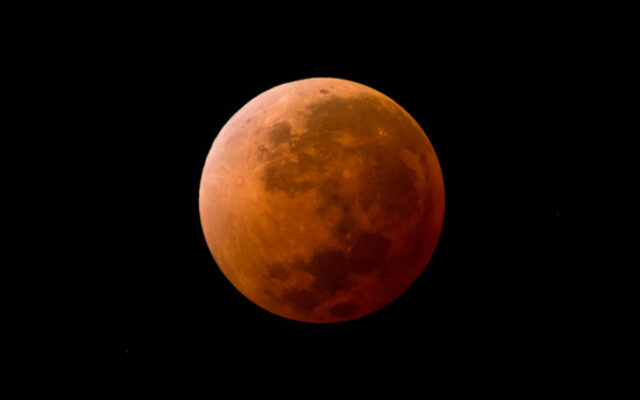This year’s second lunar eclipse to be seen from Texas before sunrise on November 8

SAN ANTONIO (KTSA News) — Hours before voters line up at the polls for the November midterm elections, the Earth, moon and sun will line up for a total lunar eclipse early Tuesday morning.
It has been referred to as a blood moon because of the darker, reddish color the moon takes on because of the shadow it moves into. Unlike a solar eclipse, you do not have to have special glasses or lenses to view the total lunar eclipse.
The event will begin taking place at around 2 a.m. and this lunar eclipse marks the second one of its kind this year, the last coming on May 16.
Weather permitting, all of Texas should be able to see the lunar eclipse.
The lunar eclipse is a process that can be seen in different stages, and you can take in the timeline below.
- 2:02 a.m. – The edge of the Moon will begin entering the penumbra. You’ll likely only notice dim shading (if anything at all).
- 3:09 a.m. – The edge of the Moon will begin entering the umbra and significant darkening will be noticeable.
- 4:16 a.m. – The Moon will be completely inside the umbra, marking the beginning of the total lunar eclipse, also known as totality.
- 4:59 a.m. – The Moon will be halfway through its path across the umbra, marking the moment of greatest eclipse, when the moon turns reddish-orange.
- 5:41 a.m. – The edge of the Moon will begin exiting the umbra and moving into the opposite side of the penumbra. At this point, the Moon will have just set in the most northeastern portions of the continental United States. More and more eastern states will see the Moon set over the next hour as the eclipse progresses.
- 6:49 a.m. – The Moon will be completely outside of the umbra and no longer visible in the eastern United States. Those in the central United States will see the Moon begin setting around this time (6:49 a.m. CST). The Moon will continue exiting the penumbra until the eclipse officially ends at 5:56 a.m. PST, remaining visible only to viewers in the western United States, including many in the Mountain Time Zone one hour ahead.
Parts of the world getting the best view of Tuesday’s total lunar eclipse include North and South America, as well as Asia and Australia.
The total lunar eclipse will happen March 14, 2025.
You Might Also Like



